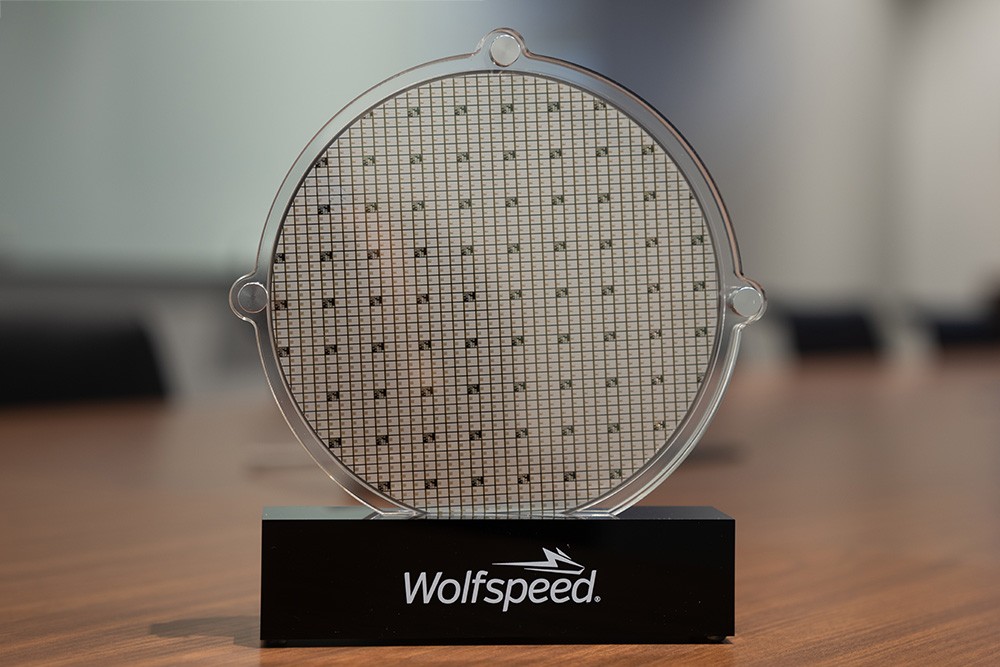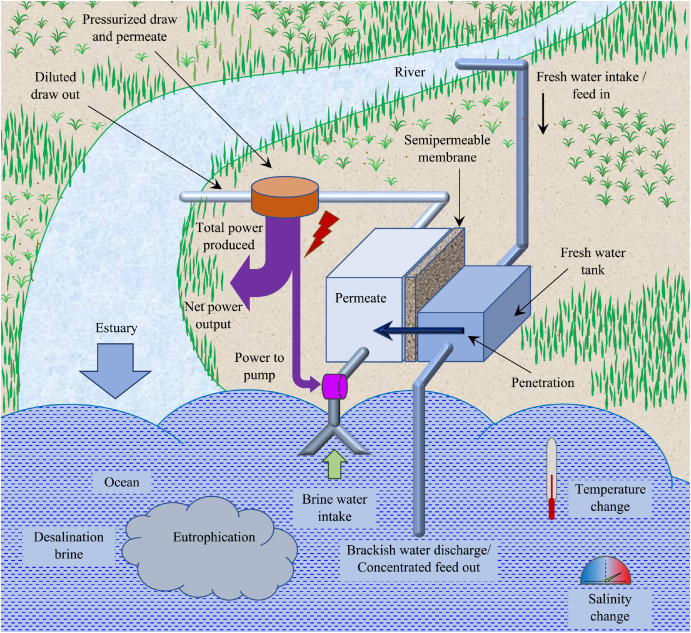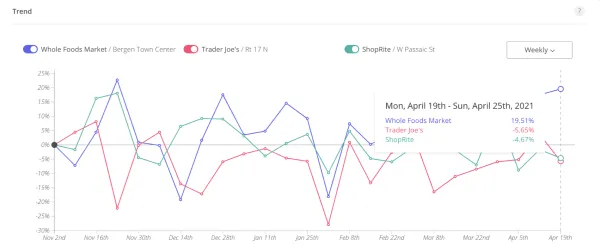Wolfspeed Unveils Breakthrough 200mm Silicon Carbide Materials for Next Generation Power Solutions

Commercial Silicon Carbide Rollout and Its Impact on Industrial Manufacturing
The recent commercial launch of Wolfspeed’s 200mm silicon carbide (SiC) materials portfolio marks a pivotal moment in the semiconductor industry. This expansive rollout has not only provided a new level of scalability for high-performance power devices but has also opened up fresh opportunities for manufacturers across industries—from automotive electric vehicles to renewable energy systems. In this opinion editorial, we take a closer look at how this innovation could transform manufacturing processes, streamline production timelines, and ultimately provide a robust competitive edge in global markets.
Wolfspeed, a global leader in silicon carbide technology, has been at the forefront of pushing the boundaries of materials engineering. The new 200mm SiC wafers and epitaxy products are designed to help device makers improve yields and accelerate release time-to-market. The company’s belief is that their cutting-edge quality at scale is the key to enabling next-generation power electronics and meeting the evolving demands in sectors characterized by tricky parts and tangled issues in production nuances.
How 200mm SiC Materials Empower Next-Generation Device Manufacturers
The introduction of 200mm SiC wafers represents more than just an increase in wafer diameter; it signals a fundamental shift in the way materials are engineered. Previously, manufacturers had to contend with a range of complicated pieces when upgrading device roadmaps. With Wolfspeed’s breakthrough, suppliers can now focus on producing higher-yield MOSFETs and other power devices more efficiently. This progress affects industries with intricate production timelines, including automotive manufacturing, industrial power systems, and renewable energy installations.
One of the major selling points of this commercial launch is the pairing of 200mm SiC epitaxy with the 200mm bare wafers. This duo provides enhanced uniformity in both doping and thickness—a critical improvement over the older 150mm products that faced more twisted challenges in quality consistency. For OEMs and semiconductor manufacturers, this development offers clarity in resolving many of the subtle parts and small distinctions that have historically led to production delays and lowered device performance.
Technical Benefits: A Closer Look at 200mm SiC Epitaxy and Bare Wafers
The technical innovations in Wolfspeed’s 200mm SiC products address several of the confusing bits and nerve-racking hurdles normally encountered in semiconductor production. By emphasizing precise control over wafer parameters, the new products allow designers to produce more efficient, higher-performing components. This advancement is particularly striking in the realm of MOSFET yield improvement, where even minor variances in doping uniformity can lead to significant production challenges.
To illustrate the technical benefits, consider the following table comparing key specifications between traditional and the newly launched 200mm SiC wafers:
| Parameter | Traditional 150mm SiC Products | New 200mm SiC Products |
|---|---|---|
| Wafer Diameter | 150mm | 200mm |
| Thickness Consistency | Variable; prone to subtle differences | Enhanced uniformity at 350µm |
| Doping Uniformity | Subject to intricate control issues | Industry-leading precision |
| Scalability | Limited by size and yield | Breakthrough scalability for mass production |
This table clearly highlights how the upgraded 200mm SiC portfolio addresses previous manufacturing challenges and offers a more stable and efficient pathway for product development.
Enhancing Manufacturing Efficiencies in the Automotive and EV Industries
The automotive sector, particularly the burgeoning electric vehicle (EV) market, stands to benefit significantly from these advancements. Silicon carbide devices are integral to power electronic systems in EVs, contributing to energy efficiency, increased range, and improved durability. As EV manufacturers push for rapid innovation, Wolfspeed’s new materials provide the technical backbone needed to deliver competitive, future-proof solutions.
There are several ways in which these materials can transform automotive production:
- Improved Efficiency: Enhanced wafer consistency reduces production waste and improves yield rates, making it easier for manufacturers to meet the increasing demand for EV components.
- Accelerated Development: With reduced production lead times, research teams can quickly prototype and test new designs, leading to faster overall product development cycles.
- Competitive Edge: Automotive brands can offer more efficient and durable products, positioning themselves ahead of competitors in an increasingly aggressive market.
In a world where the production processes are often riddled with tension and off-putting bottlenecks, this launch signals a move toward more streamlined and scalable manufacturing. Carmakers will likely find that the ability to ship more consistent high-performance components gives them an edge not only in efficiency but also in meeting regulatory requirements for sustainability.
Overcoming Supply Chain Issues in the Semiconductor Industry
Globally, supply chain management in the semiconductor sector is full of problems that range from tangled issues in procuring raw materials to unexpected production delays. Wolfspeed’s strategic approach to rolling out a broader 200mm SiC materials platform addresses some of these challenges head-on. By offering a scalable solution that can be rapidly qualified for new applications, the company is in a strong position to help its customers figure a path around common supply pitfalls.
Key challenges in the semiconductor supply chain include:
- Raw Material Availability: Securing sufficient quantities of high-quality raw materials is often intimidating, especially when political and economic conditions create disruptions.
- Production Consistency: Meeting the high standards of uniformity required for modern power devices often involves navigating through a series of tricky parts and subtle technical constraints.
- Lead Time Variability: Extended and unpredictable lead times can be nerve-racking for manufacturers trying to meet market demand.
By addressing these areas with an innovative 200mm SiC product line, Wolfspeed is showing that it understands the subtle details and little twists that can make or break production schedules. This strategic move is a critical step toward stabilizing production flows and ensuring that manufacturers can make their way through the supply chain challenges more effectively.
The Broader Economic Implications of Wolfspeed’s Launch
From an economic perspective, the launch of new silicon carbide materials by a leader like Wolfspeed can have widespread benefits across multiple sectors. The increased ability to produce more efficient and scalable semiconductor devices translates to cost reductions over time. When power devices are more efficient, they lower energy consumption, making them attractive not only to traditional manufacturers but also to those looking to optimize operations against rising energy prices.
Key economic implications include:
- Cost Efficiency: Higher yields and improved process uniformity lead to reduced manufacturing costs, benefiting both producers and consumers.
- Market Expansion: More reliable and efficient semiconductor components can accelerate the shift towards renewable energy and electrification in automotive applications, fueling overall economic growth.
- Technological Leadership: Companies that invest in advanced materials technology are more likely to lead innovation, establishing themselves as essential players in a competitive global market.
This move also has tax law implications for small and industrial manufacturers that may benefit from new incentives to upgrade their production facilities. Firms that invest in scalable, energy-efficient technology might be eligible for tax breaks, further enhancing the business case for switching to advanced SiC technologies. The interplay of modern manufacturing and supportive business tax policies is a key area where industry and government can come together for mutual benefit.
Market Trends: Silicon Carbide in the Electric Vehicle Space
The shift towards silicon carbide components in the electric vehicle market is more than a trend—it is a significant industry evolution. As EV demand accelerates around the world, traditional silicon-based devices are increasingly seen as insufficient for meeting the efficiency standards required in today’s competitive markets. Wolfspeed’s new portfolio is a prime example of how technology is being realigned to support these growing industry needs.
Industry observers note that the EV market is continuously evolving, with a focus on reducing the weight and energy consumption of vehicles.
Why EV manufacturers are turning to 200mm SiC technology:
- Enhanced Performance: SiC-based power devices provide superior energy efficiency, which directly translates to longer driving ranges and improved vehicle performance.
- Lower Production Costs: The scalability of 200mm wafers allows for greater production volumes, potentially lowering the cost per unit over time.
- Improved Reliability: With better doping uniformity and thickness control, EV manufacturers can expect fewer failures and longer component lifespans.
As electric vehicles continue to gain popularity, the benefits of switching to silicon carbide are becoming increasingly clear. Wolfspeed’s dedication to advancing SiC technology shows that the automakers who are early adopters of these innovations are likely to reap substantial benefits in both operational efficiency and brand reputation, especially in markets that prize sustainability and performance.
A Closer Look at the Role of Leadership in Driving Industry Change
Effective leadership is a must-have in industries navigating through tricky parts and tangled issues, and recent executive changes at Wolfspeed underscore the importance of strong strategic guidance. The departure of key personnel, such as the recent mutual agreement with Neill Reynolds, the former Executive Vice President and Chief Financial Officer, demonstrates not only the high stakes in managing complex corporate structures but also the need for fresh leadership to steer new initiatives.
Leadership transitions are inherently nerve-racking; however, they can also usher in a new era of innovation and growth. Wolfspeed’s strategic replacement and appointment of seasoned veterans, like Bret Zahn to lead their Automotive business, illustrate a proactive approach to addressing the subtle parts and fine shades of industry evolution.
These leadership moves are particularly instructive for small businesses and industrial manufacturers alike. In an industry full of problematic twists and turns, the ability to find your way through executive transitions with continuity and strategic focus is super important for long-term success.
Some of the key leadership lessons from this period include:
- Clear Vision: Companies that have a well-articulated vision tend to weather leadership changes more smoothly, ensuring that strategy execution remains steady even during periods of transition.
- Proactive Change Management: Actively managing leadership succession and executive realignment can reduce the overwhelming impact of change and sustain market confidence.
- Focus on Core Competencies: Maintaining technological and operational strengths during leadership transitions is crucial, especially in sectors that are racing to innovate.
Wolfspeed’s recent shifts in executive leadership reflect a broader trend in the semiconductor industry: an agile, forward-looking approach is essential for dealing with the subtle details and slight differences that may seem intimidating to less-prepared companies.
Strategic Insights on Overcoming Supply Chain and Production Bottlenecks
In addition to technical innovations and leadership changes, another critical aspect of Wolfspeed’s announcement is its comprehensive approach to managing production bottlenecks. In today’s industrial manufacturing environment, the supply chain is full of problems that require companies to get into a mode of rapid problem-solving and creative thinking. The new product launch is a clear response to the market demand for solutions that address everything from raw material availability to the final production stages.
The key measures that Wolfspeed appears to be focusing on include:
- Streamlined Production: By offering a scalable 200mm solution, the company is effectively reducing production time delays that often result from confusing bits in traditional manufacturing setups.
- Quality Control Enhancements: Eliminating subtle parts in production inconsistencies leads to better overall yield and reliability of the produced components.
- Increased Qualification Speed: Offering immediate qualification of the 200mm SiC epitaxy enables manufacturers to test and adapt new products swiftly, reducing the nerve-racking wait times typically associated with technological upgrades.
Furthermore, Wolfspeed’s proactive approach is illustrative of a wider industry trend, where matching production speed with quality has become a key differentiator in competitive markets. As global supply chains become more complicated and occasionally off-putting, companies that can effectively manage the twists and turns of production logistics will have a crucial edge over those that cannot.
Evaluating the Ripple Effects Across Global Markets
When a significant player such as Wolfspeed makes a bold move in technology, the ripple effects are felt across various sectors. The commercial launch of 200mm SiC materials isn’t just about meeting production quotas; it’s about setting a new standard for quality and efficiency that could drive substantial shifts in market dynamics.
The cross-industry impacts can be summarized as follows:
- Electrification Trends: As the push for electric vehicles gains momentum worldwide, improvements in silicon carbide technology play a key role in enhancing power conversion systems, thereby accelerating the adoption of EVs.
- Industrial Manufacturing: More reliable and scalable SiC solutions mean that industrial manufacturers can confidently make investments in next-generation power devices without worrying about the subtle parts that previously derailed production schedules.
- Renewable Energy Integration: The energy sector stands to benefit from improved semiconductor devices, particularly in the form of more efficient inverters and power modules, which are crucial for harnessing renewable energy sources effectively.
Economically, these trends broaden the market opportunities for suppliers and manufacturers alike. They also usher in a wave of indirect benefits, such as job creation, enhanced research and development efforts, and an overall boost in investor confidence. For small businesses and startups, these developments signal an environment where technological innovation and efficiency can lead to lucrative opportunities, despite the inherent challenges present in global supply chains.
The Broader Regulatory and Tax Implications
The shift towards advanced silicon carbide technology is also accompanied by significant regulatory and tax considerations. Governments around the world are increasingly incentivizing investments in energy-efficient technologies and modern manufacturing processes. As companies like Wolfspeed lead the charge with groundbreaking products, there arises an opportunity to re-evaluate how business tax laws can support such innovation.
Among the key tax and regulatory benefits are:
- Research and Development Credits: Firms investing in scalable and energy-saving technologies may qualify for attractive R&D tax breaks, which help offset the initial outlay for adopting new production lines.
- Green Energy Incentives: With a global push towards reducing carbon footprints, both manufacturers and end users of efficient power devices might access government grants and other financial aids.
- Compliance and Sustainability: Upgraded semiconductor technologies often comply better with modern environmental regulations, reducing the risk of penalties and fostering a more sustainable business model.
For many small and industrial players, the key lies in finding your way through the maze of regulations and leveraging these incentives to support growth. This new era of silicon carbide innovation could very well serve as a catalyst for broader economic reform—making it much easier for businesses to upgrade their processes without facing overwhelming bureaucracy.
Innovation, Competition, and Future Growth Prospects
Innovation in technology is never a linear journey. It is filled with twisted paths, subtle details, and often nerve-racking periods of uncertainty. Wolfspeed’s launch of the 200mm SiC portfolio is a prime example of innovation in motion, one that signals a deep commitment to meeting both current and future market needs.
Future growth in the semiconductor market hinges on several factors that industry experts are closely monitoring:
- Adoption Rate: How quickly will industries—especially those in automotive and renewable energy—integrate these new materials into their production processes?
- Competitive Pressure: Will competitors be able to match the quality and scalability of Wolfspeed’s launch, or will they need to innovate further?
- Technological Advancements: As technology evolves rapidly, maintaining production quality while improving scalability will be an ongoing challenge that all players must address.
These questions are not merely academic; they have real-world implications for market share, operational efficiency, and overall economic competitiveness. As companies worldwide work their way through these tricky parts and subtle challenges, the ability to innovate continuously will be the super important factor that separates market leaders from the rest of the pack.
Industry analysts also point out that investing in advanced SiC materials not only boosts manufacturing capabilities but also has broader strategic benefits. For instance, improved power conversion efficiency reduces operational costs in the long run, thereby enhancing a company’s bottom line and creating a more resilient supply chain against external shocks.
The Role of Silicon Carbide in Advancing Global Power Electronics
At its core, silicon carbide technology is revolutionizing the power electronics landscape. From data centers and telecommunications infrastructure to automotive power systems, SiC devices are central to modern powering solutions. Wolfspeed’s latest rollout is an essential building block in this transformation.
Here are some of the critical advantages that silicon carbide offers to global power electronics:
- High Efficiency: SiC devices can operate at higher temperatures and voltages, allowing for more efficient power management and lower energy losses.
- Robustness and Reliability: With enhanced material properties, the new 200mm products promise greater durability and longer operational lifespans—an important factor in heavy-duty applications.
- Compact Design: The ability to achieve higher performance in smaller form factors enables more compact and efficient system designs, crucial in the automotive and portable electronics markets.
Such features highlight why silicon carbide is quickly becoming a must-have in modern electronic design. As industries continue to work through the confusing bits and challenging segments of product development, integrating SiC technology is proving to be the key that unlocks better performance and reduced operational costs.
Strategizing for a Brighter Future in Silicon Carbide Technologies
Looking ahead, it is apparent that the path forward for silicon carbide technology is both imperative and full of potential. With advancements such as the 200mm SiC portfolio from Wolfspeed, manufacturers have a new tool in their arsenal—a tool that not only addresses present-day production hurdles but also lays the groundwork for future innovations.
Strategic planning in this space involves several core considerations:
- Continuous Improvement: Staying ahead requires regular upgrades to production methods and ongoing investments in research and development.
- Collaboration Across Industries: The integration of SiC technology in automotive, renewable energy, and industrial manufacturing presents a unique opportunity for cross-sector collaboration, enriching all parts of the value chain.
- Risk Management: With every innovative leap comes the potential for setbacks. Manufacturers must be prepared for unexpected twists and turns, ensuring robust contingency strategies and transparent communication with stakeholders.
For decision-makers and investors observing these trends, it is super important to appreciate that technological innovation in silicon carbide is not an isolated development. Instead, it is part of a larger cultural shift within industrial manufacturing—one that prioritizes streamlined production processes, improved operational efficiencies, and smart regulatory strategies.
Concluding Thoughts on Wolfspeed’s Strategic Launch and Future Market Trends
Wolfspeed’s commercial launch of the 200mm silicon carbide materials portfolio is a noteworthy milestone that underscores the significance of innovation in today’s high-growth industrial environment. As manufacturers across the automotive, renewable energy, and industrial sectors seek to overcome confusing bits and nerve-racking production challenges, solutions such as these provide not only technological enhancements but also more robust economic opportunities.
By addressing technical issues such as doping uniformity and thickness consistency, this new product line sets a strong foundation for scaling up high-performance power devices. Moreover, the strategic emphasis on quality at scale offers a reliable pathway for companies to work through the rough patches of flawed legacy systems, allowing them to make their way through market challenges with greater confidence.
Every large-scale product launch comes with its own set of tangled issues and intimidating uncertainties. However, with a deep commitment to innovation and a clear understanding of the subtle parts and small distinctions that define modern manufacturing, Wolfspeed seems well-poised to lead the semiconductor industry into a new era of efficiency and progress.
For businesses, investors, and policymakers alike, the implications of this launch are extensive. It is a call to pivot toward smarter manufacturing strategies that not only boost productivity but also offer sustainable benefits for the broader economy. As global markets continue to evolve, the ability to steer through supply chain twists, manage production bottlenecks, and capitalize on technological breakthroughs will remain central to competitive success.
In summary, while the journey ahead is full of challenges and unexpected turns, the evolution of silicon carbide technology—as demonstrated by Wolfspeed’s recent advancements—offers a promising vision for a future where high-performance power electronics can be produced both reliably and at scale. As industries continue to dig into these new capabilities, the balance between economic growth and efficiency is destined to tilt favorably towards those who are quick to adapt and innovate.
Key Takeaways for Small Businesses and Industrial Manufacturers
For small businesses and larger industrial manufacturers eyeing the benefits of these trends, there are several clear takeaways:
- Embrace New Technologies: Investing in advanced silicon carbide solutions may seem a bit overwhelming at first, but the long-term efficiency gains far outweigh the initial effort.
- Prepare for Change: Keep an eye on leadership and strategic shifts within key industry players. These transitions often herald broader market dynamics that can affect your own business strategy.
- Optimize Supply Chains: As supply challenges persist on a global scale, now is the time to re-evaluate your supply chain management strategies and build in more flexibility to handle unexpected disruptions.
- Stay Informed on Regulatory Developments: With shifting policies aimed at promoting green technology and sustainable business practices, ensuring compliance can also unlock significant fiscal benefits.
These pointers underscore the broader message that while the path to innovation is riddled with tricky parts and nerve-racking transitions, the companies that can successfully manage these challenges will position themselves at the forefront of their industries.
Final Thoughts: The Future of Silicon Carbide and Modern Manufacturing
In an era where efficiency and sustainability are key drivers of growth, the launch of Wolfspeed’s 200mm SiC materials portfolio comes at an opportune moment. With industries spanning automotive electric vehicles, industrial manufacturing, and renewable energy converging towards a common goal of improved performance, this breakthrough serves as an essential catalyst for future progress.
Technology, after all, is not just about the materials or processes—it’s about the promise of a better, more efficient future. Understanding the fine points and little details of production, leadership, and supply chain management is super important for any business looking to be competitive in tomorrow’s market.
As we stand on the cusp of this new technological era, it is encouraging to witness such robust advancements. Companies that are prepared to manage the twists and turns of a rapidly evolving market, and that are ready to steer through both the overwhelming challenges and subtle differences, will be the ones that succeed in the long run.
Ultimately, Wolfspeed’s commercial launch is a wake-up call to all industry stakeholders—a clear indication that the future of high-performance power electronics is being redefined. With scalable, efficient, and reliable silicon carbide technologies now within reach, manufacturers have the opportunity to make a critical leap forward in realizing their production and sustainability goals.
In light of these developments, adopting a proactive approach, investing in innovation, and continuously recalibrating operational strategies are not just options but necessities. These actions will ensure that the entire ecosystem—from raw material providers to end-product manufacturers—can benefit from the improved efficiencies and market dynamics that advancements in silicon carbide technology promise.
The integration of high-performance SiC materials in modern manufacturing does more than enhance productivity; it paves the way for an industrial revolution that is both economically beneficial and technically impressive. As industries continue to get into these new technologies, the ability to balance innovation with practical execution will define the leaders of tomorrow.
As we look toward the future, it becomes clear that the next chapter in semiconductor technology will not solely be written by the pioneers like Wolfspeed, but by every business that dares to adapt, innovate, and step up to the challenge of creating a more energy-efficient and sustainable world.
Read more about this topic at
Wolfspeed Announces the Commercial Launch of 200mm …
Scaling up SiC crystal growth to meet demand






